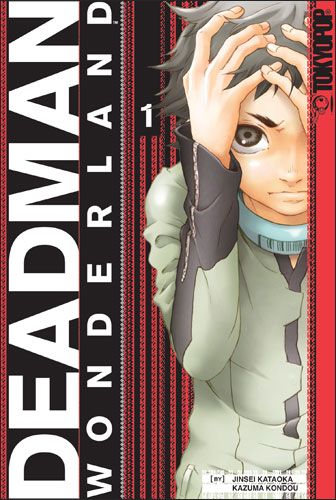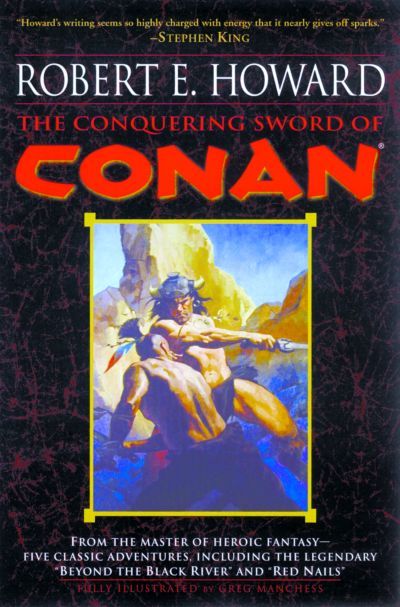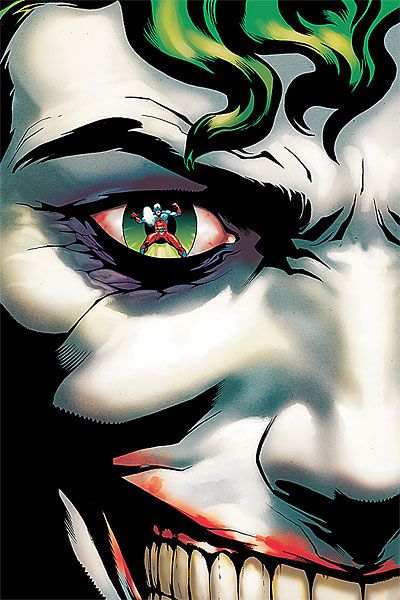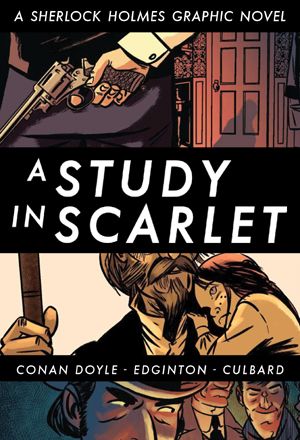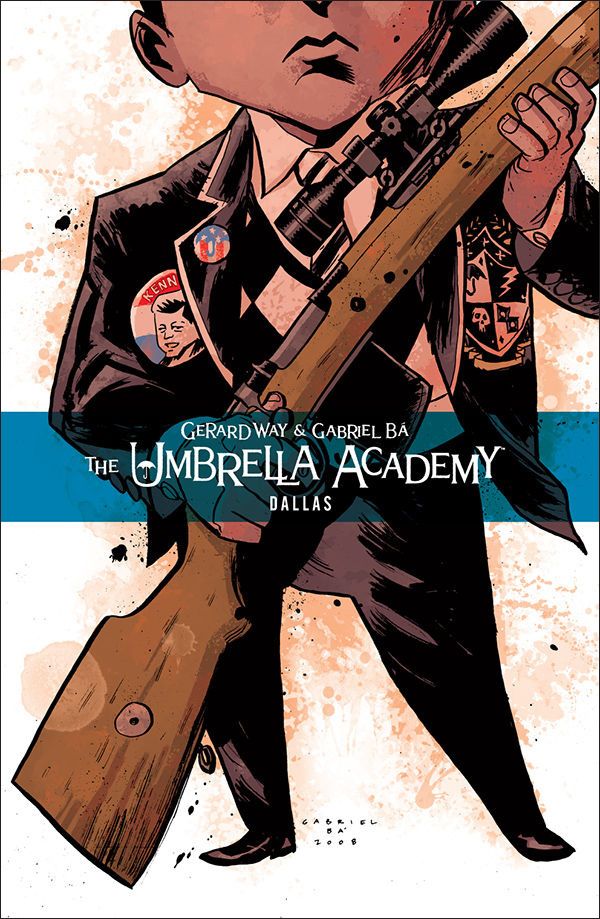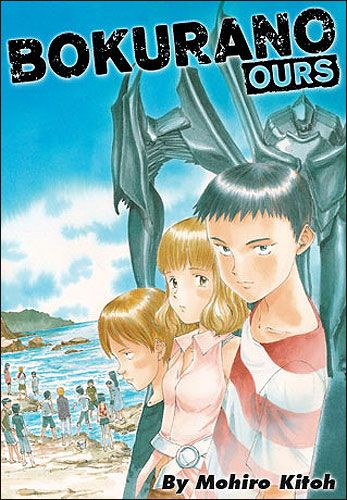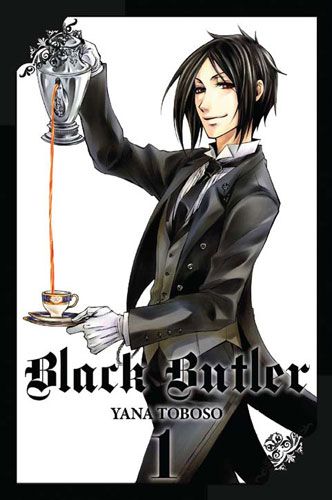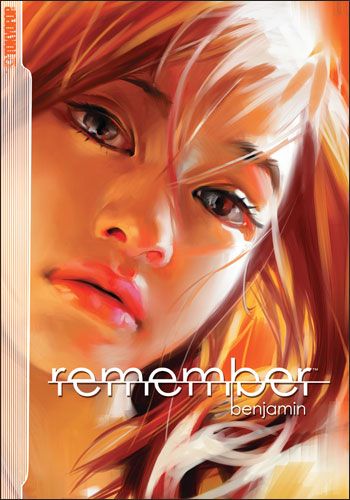Arriving on your virtual driveway like a big, thick newspaper (remember those?) it's time once again for What Are You Reading. Our guest this week is Deb Aoki, who runs the excellent Manga About.com site, which, if you have any interest at all in Japanese comics, you really should have that site bookmarked and/or in your RSS feed.
I'm abstaining from participating in this week's WAYR, as a nasty cold has made it difficult to form coherent sentences. But Deb and the rest of the Robot 6 crew have a veritable boatload of interesting comics to talk about, so be sure to click on the link and see read their comments. Oh, and be sure to share with us what you're reading in the comments section, OK?
Sean T. Collins: I'm slowly carving my way through the final run of Robert E. Howard Conan stories in the collection The Conquering Sword of Conan. Man are these things good, and so bleak. Every once in a while it creeps out explicitly: "Barbarism is the natural state of mankind. Civilization is unnatural. It is a whim of circumstance. And barbarism must always ultimately triumph." Or even better, from the earlier collection The Bloody Crown of Conan: "Through his physical revulsion ran the sense of a shattered dream of man's idolatry, its glittering gold proved slime and cosmic filth. A wave of futility swept over him, a dim fear of the falseness of all men's dreams and idolatries." Howard killed himself, of course; sometimes you read these stories and understand.
On a brighter note, I just received Where's Waldo?: The Complete Collection in the mail from Amazon. There's a review in me someplace so I won't talk at length, but I can't wait to see if the pure joy of Martin Handford's cartooning in these things that I remember from when I was a kid holds up today -- just the thrill of creating a world on paper and filling it with little people and little dramas and adventures. Where's Waldo? is like My First Fort Thunder.
Tim O'Shea: J. Michael Straczynski was smart to take the Brave and Bold gig (or whomever assigned it to him was smart). Once a month he gets to play with whatever DC characters he can think of using. And he's gone way off the grid with the Atom and the Joker this month. Ray Palmer literally gets in the Joker's head--for medical reasons. But my favorite moment in the book was the opening page where the doctors seeking Palmer's help give him a cell phone number, which he cannot transport himself through. So his arrival is delayed until he calls back on the land line. Comedy gold. At least it was for me.
Blackest Night: Starman 81 could only have been better if Tony Harris had done more than just the cover. I really could care less about the whole "Hope, Anger, Fear, Love, Grumpy, Dopey, Gassey" narrative that comes along with these Blackest Night stories. I mean am the only person that thinks in two years we won't wince at the goofiness of these characters brought back from the dead (that aren't really the characters) but that see everyone as knockoffs of Joseph and the Amazing Technicolor Dreamcoat. The appeal for this issue had nothing to do with the Black Lanterns, what got me was James Robinson writing the O'Dare family again--and Shade. Robinson can dabble in the Superman universe all he wants, but his strongest voice and passion remains in Opal City. There's rumblings that Robinson might be open to doing more with Shade --- and I hope the sales on this issue warrant him exploring that instinct further.
Y'know if DC can have a pulp series of books and those red circle comics, I think they need to make room for a humor line. No I'm not asking to bring back Bob Hope and Jerry Lewis' comics, but maybe find some more titles in the vein of Power Girl. Justin Gray, Jimmy Palmiotti and Amanda Conner have achieved the right mixture of adventure and comedy with this series. The key to the comedy' success is Conner's art. This issue wraps up the Vartox storyline and fortunately the writers give the guest character a little more depth and a little less comedy in this issue. There's still plenty of yucks, rest assured. I also appreciate how the creators works relatively normal interactions with civilians into this series. It hearkens slightly back to Johns' approach to Flash a number of years ago.
I want to see Grant Morrison do more stories like Joe the Barbarian. It may be his level of creative ambition is exactly the same in his DC superhero work as it is with this Vertigo work, but he's trying too hard in the former case. At least that's how it feels after reading the first issue of his collaboration with artist Sean Murphy. Clearly I come in with a slight bias, having seen some advance art and having interviewed Murphy, but damn if this art is not staggering. Hell, before the hallucinations began I was just in awe of Joe's bedroom.
I'm not sure how Jeff Parker has done it, but even though the Agents of Atlas ongoing has come to an end, they are everywhere this month. They appear in a back-up in Incredible Hercules, start a four-issue miniseries versus the Avengers and feature prominently in the Thunderbolts. And yet I'm not sick of them yet. Even better, when I think about it, each story entertained me. But I'm unsure when the Agents or Parker ever sleeps.
Marcos Martin draws Amazing Spider-Man 618: Need I say more? Oh Dan Slott constructs a tale where Aunt May finally gets around to telling Peter what a loser he is. No, Slott's not become a bad writer of Aunt May, you just have to read the story to understand. Its exquisite how Martin uses May's reaction to a discovery she makes in this issue for a funky layout/reveal opportunity. I'm a sucker for unique layout and Martin's a master at that. Maybe another artist has done the following before, but I don't remember it: Martin goes to the trouble of rendering Spidey swinging by skyscrapers and you see both the character as well as his reflection on the building. You have to see it. Martin could draw a Spidey Clone story and I'd buy the damn thing, honestly.
Tom Bondurant: Dark Horse's first collection of Marvel's Star Wars comic is currently by my bedside, so this week I read the first post-movie storyline. Written by Roy Thomas (with Don Glut scripting the last issue), co-plotted and pencilled by Howard Chaykin, and inked (in wildly divergent styles) first by Steve Leialoha and then by Tom Palmer, it is an extremely broad homage to Seven Samurai. That's right, it's the one with the giant green rabbit and the killer hedgehog; and mostly it's a framework upon which Thomas and Chaykin can hang very familiar character types. (The villain is a caricature of Sergio Aragones, "Sergei-X Arrogantus." Aragones had previously been a villain -- under his own name, even -- in an issue of Bat Lash.) Of course, this is nothing new for Star Wars, considering its own eclectic influences (including Kurosawa's Hidden Fortress). In many ways I think Thomas and Chaykin were parodying SW itself. It was a fun story, and it helped set up the parallel storylines which would drive the book for the next several issues. However, I did spend a lot of time trying to find the original Chaykin under those overpowering inkers....
Speaking of overpowering inkers, on a lark I pulled Justice League of America #155 (June 1978) out of storage. "Under The Moons Of Earth" was written by Gerry Conway, pencilled by Dick Dillin, and inked by Frank McLaughlin. This is another issue from my misspent childhood, and I was glad to see it had aged well. The setup is simple: a second Moon (called "Regnar" by its people) suddenly appears in Earth orbit; and immediately its gravity starts causing all manner of natural disasters. The JLA is quick to respond, and Batman (of course) eventually discovers that the Regnarians are up to no good. I enjoyed this issue because it showed the Leaguers as professionals, calmly and confidently racing around the world to save as many civilians as possible. Both Conway and Dillin were in good form here. Conway gave the Leaguers several nice character moments, including an exchange between Batman and Red Tornado which was just on the good side of hokey; and Dillin used judiciously-placed montages to depict the worldwide destruction and the League's response. To be sure, this was a 34-page story (back then, JLA was one of DC's "Giant" books), so they had room to include such things; but I thought it was paced well and told efficiently. The big fight at the end, when Superman, Batman, and Green Lantern defeat the Regnarian army, takes a little over a page. Conway and Dillin had their share of clunkers, but this wasn't one of them.
Brigid Alverson: Graphic novel adaptations of classic literature are a dime a dozen, but Sterling Publishing’s version of A Study in Scarlet stands head and shoulders above the rest. I enjoy reading Sherlock Holmes, but I had never read this one, and it was particularly interesting as it is the first in the series — both Sherlock Holmes and Dr. Watson are introduced in this book. I.N.J. Culbard’s art is lively, and the muted colors create a convincing Victorian mood. This is an absolutely beautiful book, with a handsome cover, French flaps, and cream-colored paper, and it’s a great way to experience Sherlock Holmes in a new way.
I also read a much more juvenile mystery this week: the Max Finder Mysteries, published by Owl Kids, a magazine you may remember from grade school. What grabbed my attention about this book is that the art is by Michael Cho, whose work I know from the Transmission X webcomics collective. Max Finder is a sleuth in the mold of Encyclopedia Brown — he knows lots of obscure facts, and he has a smartass female sidekick. The thing that grabbed me is that these mysteries are actually pretty hard to solve. They don't hinge on knowing odd facts; you have to put together subtle visual clues with the personalities and possible motives of the characters. It’s a very holistic approach, and even though I read a lot of adult mystery novels, I was really proud of myself the first time I figured out one of Max Finder’s cases.
Matt Maxwell: The Umbrella Academy: Dallas
I really love the art, but the characters and situations seem very by the numbers weirdness, rather than being compellingy strange. Still haven't finished this and the ending might blow me away and change my opinion of the book, but that'd take quite some doing at this point. Still, the lovely art by Gabriel Ba goes a long way toward making this an enjoyable read.
No, I've never read it before. I'm kinda wishing I'd started earlier. The writing is incredibly lean with nothing wasted, and the art is...well...it's Eduardo Risso, who brings a fluidity and expressiveness that commands attention. That and he knows how to use black and shadows like nobody else, which serves the material incredibly well. I wonder how long the series' conceit can hold out, though. But I'm willing to stick around and find out.
Yes, I haven't read Preacher either. Leamme alone. I'm trying to get caught up. Wrongness drips from every page, every panel. But aside from that, there's a lot of meat on the story's bones, even with Ennis' love of grotesqueries semingly for their own sake. Though from what I've heard, things don't kick into gear just yet, which has me curious for the next volume. Hopefully there's more than thumbs being jabbed in various eyes (metaphorically speaking). I mean, that's not such a very hard thing to do in and of itself. Still, looking forward to the next one.
Deb Aoki: What am I reading now?
Well, not surprisingly, I have a stack of manga by my desk. I read a lot, and I usually read pretty fast, but there are a few recent arrivals that I couldn’t stop thinking about and have been chatting about lately.
I first saw the video trailer for Deadman Wonderland by Jinsei Kataoka and Kazuma Kondou at the TokyoPop offices last year and was intrigued by this sci-fi headtrip of a story. Now that I have the first volume in my hands, it has certainly delivered.
Set in a not-so-farfetched future after a giant earthquake has submerged most of Tokyo, Deadman Wonderland is about Ganta, a middle-school student who was a survivor of the disaster. Ganta enjoys a peaceful life in Nagano, until a cloaked and masked man in red appears. With a sweep of his hand, the man in red massacres all of Ganta’s classmates, and leaves Ganta to take the blame. The dazed and confused teen is then sentenced to “Deadman Wonderland,” a theme park prison where prisoners are forced to compete in deadly games for tourists’ entertainment.
Nicely drawn, albeit often gory art, lots of inventive, twisted twists and a dash of subversive humor makes Deadland Wonderland a fascinating and fun read. I have no idea where Kataoka and Kondou are taking this story, but they’ve got me hooked enough to want to buy and read volume 2.
Actually, I have a bunch of sci-fi stories on my stack this month. After being serialized online at VIZ Media’s SigIkki.com, the first volume of Bokurano: Ours by Mohiro Kitoh is due out next month. I’m all for the online reading experience but somehow, nothing quite beats being able to read a story like this in book form.
As the story opens, 15 kids are enjoying a seaside outing, when they meet a strange man who invites them to play a game. The next thing they know, they’re introduced to a gigantic robot and told that they’ll each be taking turns controlling it to defeat aliens. At first, it seems cool to control something so big and powerful, but the kids soon enough discover that the game has higher stakes than they thought.
I was one of the few folks who read (and bought) Kitoh’s earlier series Shadow Star when it was published by Dark Horse, so I was thrilled to see Bokurano: Ours published here. There’s definitely some similarities in tone and style: children thrown into situations that they can barely comprehend much less handle, dynamic battle scenes, and a compelling mix of innocence, cynicism and dark, dark humor.
Speaking of dark humor, Black Butler by Yana Toboso from Yen Press is out this week. From its cover, Black Butler looks like pure eye-candy for Gothic Lolitas – but there’s more going on here.
The “black butler” is Sebastian, the handsome and utterly unflappable butler to Ciel Phantomhive, a young aristocrat who is the head of a rich and powerful clan. Whatever Ciel wants, Sebastian delivers. No request is too impossible, no situation is too dangerous for Sebastian to handle – he can fend off kidnappers by using silverware as deadly weapons, then whip up mouth-watering pastries for teatime without breaking a sweat. But Sebastian’s frightening efficiency comes at a high price.
I started noticing fans wearing Black Butler costumes at anime conventions about a year before Yen Press announced their acquisition of this title, so anticipation is pretty high in certain fandom circles for this title. I was initially skeptical because it’s just so, so pretty. But Black Butler is surprisingly funny and action-packed too. All that, and some food porn scenes too? I’m down with that.
Gorgeous, not-so-typical art is also what draws me to Remember, TokyoPop’s second full-color volume of stories by Chinese manhua artist Benjamin. Benjamin’s lush palette and confident, painterly strokes makes Remember lovely to look at, even though he piles on the emo angst to the point where I just want to slap him.
Remember is definitely a flawed work – the story is awkward and the script is full of pompous, navel-gazing prose. But what makes Remember more fascinating for me than Orange (his first U.S. published work) is that it offers a glimpse of the Chinese comics publishing industry. A young artist is constantly frustrated by editors who tell him he draws the wrong kinds of stories (he should draw historical dramas, not modern tales) and that he draws the wrong kind of way (he should draw more like Japanese manga). Just when he’s ready to give up, he meets a pretty and idealistic female comics creator who encourages him to push past his limitations.
Remember isn’t perfect, but it’s interesting to see a Chinese creator striving to define comics on his own terms.


